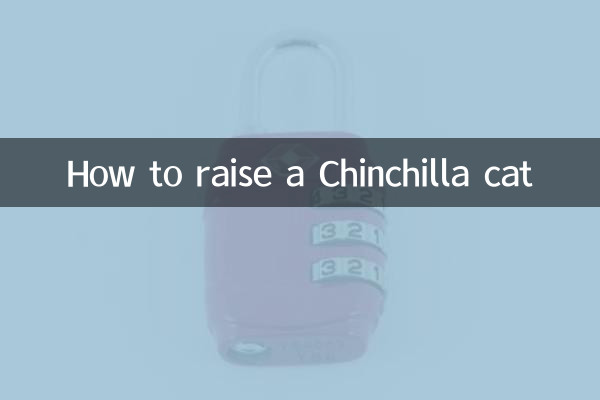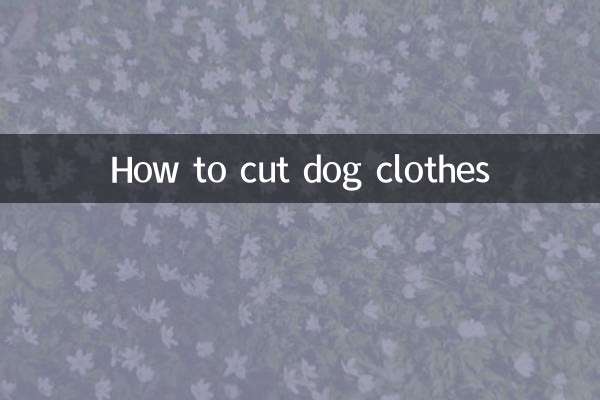How to raise a Chinchilla cat
The Chinchilla cat is an elegant, docile and noble cat breed that is loved by pet lovers for its gorgeous coat and unique personality. If you want to raise a chinchilla cat, you need to understand its feeding methods, daily care and health management. Here is a comprehensive guide to raising a Chinchilla cat.
1. Basic introduction to Chinchilla cats

Chinchilla cats originated from Persian cats and have long, soft coats and round faces. They have a gentle personality and like to interact with people, making them suitable for family breeding. Chinchilla cats usually have a lifespan of 12-15 years and require careful care by their owners to stay healthy.
| feature | describe |
|---|---|
| body shape | Medium build, weight 3-6 kg |
| coat | Long and soft, requires regular combing |
| character | Docile, friendly, likes quietness |
| life | 12-15 years |
2. Daily feeding of Chinchilla cats
1.Diet management: Chinchilla cats need balanced nutrition in their diet, and it is recommended to choose high-quality cat food. Kittens and adult cats have different dietary needs and need to be adjusted based on age.
| age group | dietary advice |
|---|---|
| Kittens (0-1 years old) | High protein, easy to digest kitten food |
| Adult cats (1-7 years old) | Balanced nutritional cat food |
| Senior cats (over 7 years old) | Low-fat, easy-to-digest senior cat food |
2.drink water: Chinchilla cats are prone to urinary system diseases and need to ensure sufficient clean drinking water. It is recommended to use mobile water dispenser.
3.snack: Give your cat an appropriate amount of snacks, but avoid excessive amounts to avoid affecting the meal intake.
3. Daily care of Chinchilla cats
1.comb the coat: The long hair of Chinchilla cats is easily tangled and needs to be combed once a day using a special cat comb.
2.bath: Bathe 1-2 times a month and use cat-specific shower gel to avoid dry skin caused by frequent bathing.
3.eye care: Chinchilla cats are prone to tears and need to clean their eyes with wet wipes every day to prevent tear stains.
4.Nail trimming: Trim nails once a month to avoid scratching furniture or owners.
| nursing project | frequency |
|---|---|
| comb the coat | once a day |
| bath | 1-2 times a month |
| eye cleaning | once a day |
| Nail trimming | once a month |
4. Health management of Chinchilla cats
1.Regular physical examination: Take your cat to the pet hospital for a physical examination at least once a year to ensure that it is in good health.
2.Vaccination: Follow your veterinarian’s recommendations for vaccinations to prevent common cat diseases.
3.deworming: Regularly conduct internal and external deworming to prevent parasitic infection.
| health project | frequency |
|---|---|
| Physical examination | once a year |
| Vaccination | As recommended by your veterinarian |
| deworming | Once every 3 months |
5. Behavior training of Chinchilla cats
1.social training: Chinchilla cats have a gentle personality, but they still need to be socialized and trained from an early age to avoid timid or aggressive behavior.
2.Excretion at designated points: Train cats to use the litter box and keep your home clean.
3.Toy interaction: Provide suitable toys to promote cat exercise and avoid obesity.
6. Common diseases of chinchilla cats
Chinchilla cats are prone to the following diseases, and owners need to pay special attention to:
| disease | symptom | Precautions |
|---|---|---|
| urinary tract disease | Frequent urination, blood in urine | Drink more water and have regular physical examinations |
| tears | Excessive eye discharge | Clean eyes daily |
| obesity | Overweight | Control your diet and exercise more |
7. Summary
Chinchilla cats are a cat breed that require careful care. From diet, care to health management, every step requires the owner's attention. With scientific feeding methods and regular care, your chinchilla cat can stay with you healthily and happily for many years. Hopefully this guide will help you take better care of your chinchilla cat!

check the details

check the details